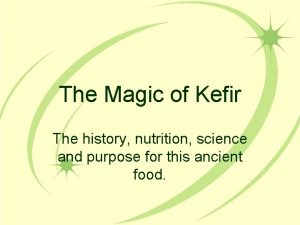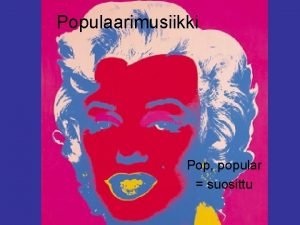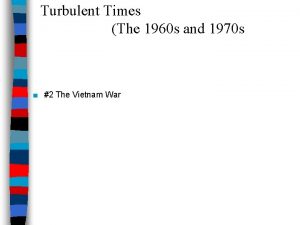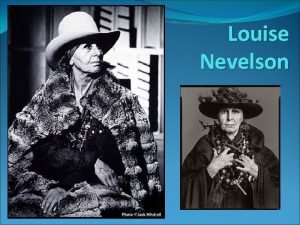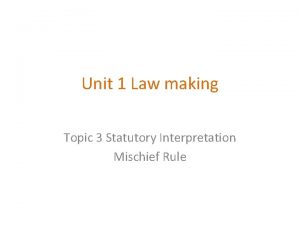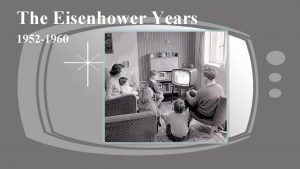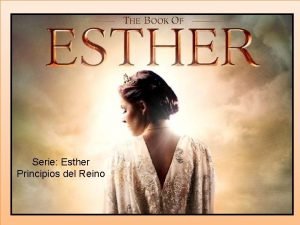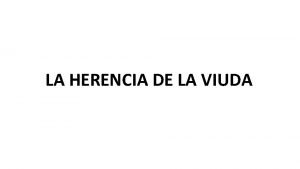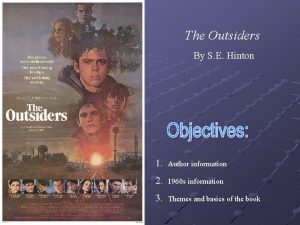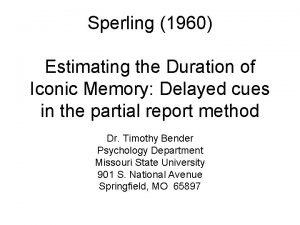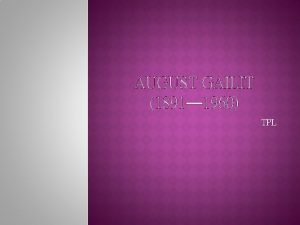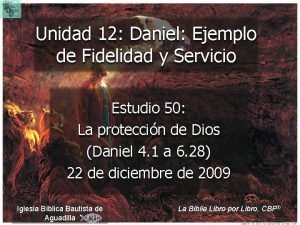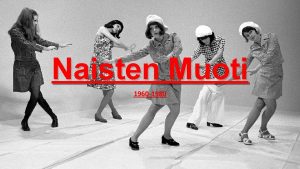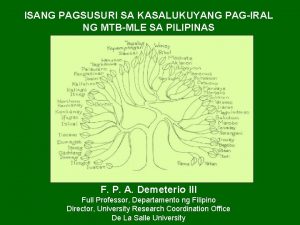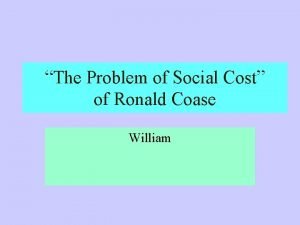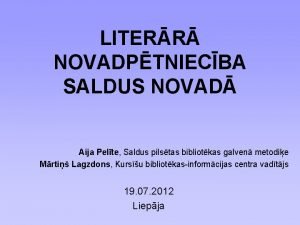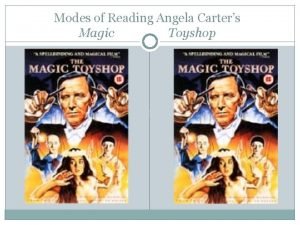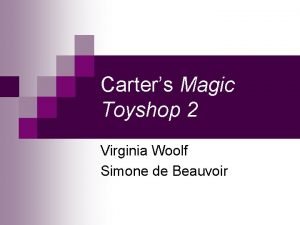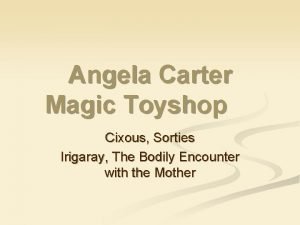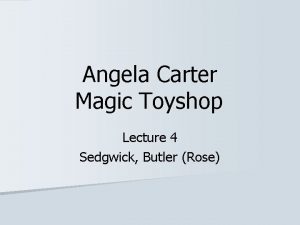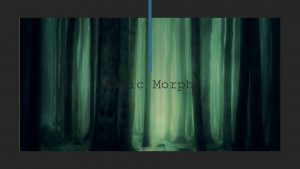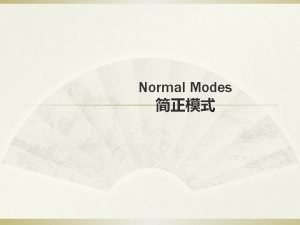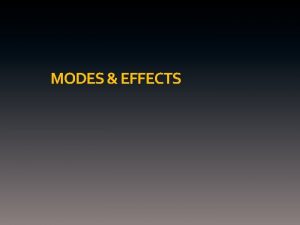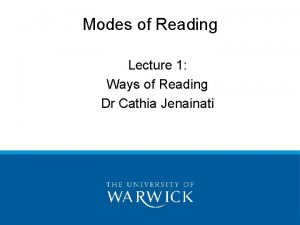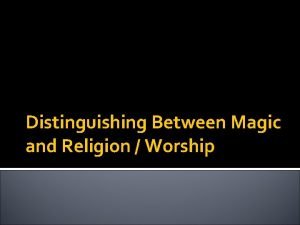Modes of Reading Angela Carters Magic Toyshop 1960


















![�[Melanie] was a wind-up putting-away doll, clicking through its programmed movements. Uncle Philip might �[Melanie] was a wind-up putting-away doll, clicking through its programmed movements. Uncle Philip might](https://slidetodoc.com/presentation_image/cc2e7ed8630e40577dd6948c52b37094/image-19.jpg)
















- Slides: 35

Modes of Reading Angela Carter’s Magic Toyshop

1960 s �Iris Murdoch �John Fowles �Doris Lessing Realism with psychological experimentation as social criticism.

�Carter’s novels mingle the fantastic with the political using richly artificial language filled with intertextual references; and by doing so, Carter's novels both critique and expand the existing range of social imagery.

Page 2 �She also posed in attitudes, holding things. Pre-Raphaelite, she combed out her long, black hair to stream straight down from a centre parting and thoughtfully regarded herself as she held a tiger-lily from the garden under her chin, her knees pressed together.

�A la Toulouse Lautrec, she dragged her hair sluttishly across her face and sat down in a chair with her legs apart and a bowl of water and a towel at her feet, She always felt particularly wicked when she posed for Lautrec, although she made up fantasies in which she lived in his time (she had been a chorus girl or a model and fed a sparrow with crumbs from her Paris attic window). In these fantasies, she helped him and loved him because she was sorry for him, since he was a dwarf and a genius.

�She was too thin for a Titian or a Renoir but she contrived a pale, smug Cranach Venus with a bit of net curtain wound round her head and the necklace of cultured pearls they gave her when she was confirmed at her throat. After she read Lady Chatterley’s Lover, she secretly picked forget-me-nots and stuck them in her pubic hair.

Pre. Raphaelite

Toulouse Lautrec “la clowness assisse”

Lautrec

Lucas Cranach “Venus” (1652)


Lorna Doone

�Carter's novels both critique and expand the existing range of social imagery available to women in the late 1960 s �Objective Correlative p 605

�Objective Correlative (p 605 in Dictionary of Literary Terms) �“the only way of expressing emotion in the form of art is by finding an ‘objective correlative’; in other words, a set of objects, situations, a chain of events which shall be the formula of that particular emotion; such that when the external facts, which must terminate in sensory experience, are given, the emotion is immediately evoked” (TS Eliot, on Hamlet, 1919)

�Pre-Raphaelite (c. 1848) �Toulouse Lautrec (1890 s) �Cranach (1652) �Lady Chatterley’s Lover (1928) �Lorna Doone (1869)…

�Our external symbols must always express the life within us with absolute precision; . . . the nature of our life alone has determined their forms. A critique of these symbols is a critique of our lives (Carter, Passion of New Eve, 1977).

1960 s �we were truly asking ourselves questions about the nature of reality. . I can date to that time and to that sense of heightened awareness of the society around me in the summer of 1968, my own questioning of the nature of my reality as a woman. How that social fiction of my "femininity" was created, by means outside my control, and palmed off on me as the real thing. This investigation of the social fictions that regulate our lives---what Blake called the "mindforg'd manacles" ---is what I've concerned myself with consciously since that time.

�'The Gothic tradition in which Poe writes grandly ignores the value systems of our institutions; it deals entirely with the profane. Its great themes are incest and cannibalism. Character and events are exaggerated beyond reality, to become symbols, ideas, passions. Its style will tend to be ornate, unnatural -- and thus operate against the perennial human desire to believe the word as fact. Its only humour is black humour. It retains a singular moral function -- that of provoking unease. ' (Carter, Fireworks)
![Melanie was a windup puttingaway doll clicking through its programmed movements Uncle Philip might �[Melanie] was a wind-up putting-away doll, clicking through its programmed movements. Uncle Philip might](https://slidetodoc.com/presentation_image/cc2e7ed8630e40577dd6948c52b37094/image-19.jpg)
�[Melanie] was a wind-up putting-away doll, clicking through its programmed movements. Uncle Philip might have made her over, already. She was without volition of her own. . . she was in limbo and would be for the rest of her life. (84)

�She felt lonely and chilled, walking along the long, brown passages, past secret doors, shut tight. Bluebeard’s castle. Melanie felt a shudder of dread as she went by every door, in case it opened and something, some clockwork horror rolling hugely on small wheels, some terrifying joke or hideous novelty, emerged to put her courage to the test. (92)

�Who occupied the rooms in the daytime? Bluebeard’s castle, it was, or Mr Fox’s manor house with “Be bold, be bold but not too bold” written up over every lintel and chopped up corpses neatly piled in all the wardrobes and airing cupboards, on top of the sheets and pillowslips…

“We live in Gothic times. " (Carter, “Afterword” Fireworks 1974)

Intertextual references �Victoria is likened to Mrs Rochester (8) �Romeo and Juliet (10) �Rime of the Ancient Mariner (14) �Pilgrim’s Progress (Christian’s burden) (24) �Lorna Doone (1869) (3, 24)

Light of the World (William Hunt 1853)

La belle au bois dormant (Gustave Dore)

The last meal in the old home 1862

Intertextuality �Julia Kristeva in 1966 �ways in which literary texts depend on each other �Allusion gestures toward another text without taking on its entire context. �“absorption and transformation of another. ” �The stance of the speaker = thetic

�“she was in limbo and would be for the rest of her life” (84) �“she ached with longing” (85) �“It was the fault of the wedding dress night, when she married the shadows and the world ended. All this was taking place in an empty space at the end of the world”. (86)

BUT �“in spite of all that, they were red and had substance and she, Melanie, was forever grey, a shadow” (86). �“If only I wasn’t so young and inexperienced and dependent. ”(92)

� She also posed in attitudes, holding things. Pre- Raphaelite, she combed out her long, black hair to stream straight down from a centre parting and thoughtfully regarded herself as she held a tiger-lily from the garden under her chin, her knees pressed together. A la Toulouse Lautrec, she dragged her hair sluttishly across her face and sat down in a chair with her legs apart and a bowl of water and a towel at her feet, She always felt particularly wicked when she posed for Lautrec, although she made up fantasies in which she lived in his time (she had been a chorus girl or a model and fed a sparrow with crumbs from her Paris attic window). In these fantasies, she helped him and loved him because she was sorry for him, since he was a dwarf and a genius.

�“She saw herself and was touched. She was taking off her chocolate sweater and was all twisted up, a rather thin but nicely made young girl with a delicate withdrawn face, against a wall of dark roses. Her wallpaper…Her black hair exploded about her head in great Art Nouveau ripples…” (172)

�Melanie helped her aunt like a lady’s maid, setting the dress and adjusting the hang of the skirt and zipping up the back. Her aunt stood stock still and let Melanie dress her. She looked beatified. (208) �Am I as thin as that?

�Carter’s novels mingle the fantastic with the political using richly artificial language filled with intertextual references; and by doing so, Carter's novels both critique and expand the existing range of social imagery.

Terms �Objective Correlative �Intertextuality �Allusion �The thetic

 Carters israel
Carters israel Pre reading while reading and post reading activities
Pre reading while reading and post reading activities The magic of kefir
The magic of kefir What are the aims of teaching reading?
What are the aims of teaching reading? What is extensive reading
What is extensive reading Intensive reading characteristics
Intensive reading characteristics Intensive reading and extensive reading
Intensive reading and extensive reading Guided reading vs shared reading
Guided reading vs shared reading Characteristics of intensive reading
Characteristics of intensive reading Round robin reading vs popcorn reading
Round robin reading vs popcorn reading Critical reading is an active and reactive process.
Critical reading is an active and reactive process. Hebreos 11:1-3
Hebreos 11:1-3 Apt 1960
Apt 1960 2000 luvun artistit
2000 luvun artistit Vietnam war 1960
Vietnam war 1960 Louise nevelson dawn's wedding chapel iv
Louise nevelson dawn's wedding chapel iv Smith v hughes 1960
Smith v hughes 1960 Cimbaj
Cimbaj The eisenhower years, 1952-1960
The eisenhower years, 1952-1960 Historia de la reina vasti
Historia de la reina vasti Proverbio 3 15
Proverbio 3 15 S.e hinton 1960
S.e hinton 1960 Babs 1960
Babs 1960 Efesios 6 10 20
Efesios 6 10 20 Maharashtra district in 1960
Maharashtra district in 1960 Dr andrew sperling
Dr andrew sperling Kirjanik 1891-1960
Kirjanik 1891-1960 Food from the 1960s
Food from the 1960s Heizer city
Heizer city Como expresaba daniel su amor y fidelidad a dios
Como expresaba daniel su amor y fidelidad a dios 60-luvun hippityyli
60-luvun hippityyli Kasalungat ng pagsusuri
Kasalungat ng pagsusuri Coase 1960 the problem of social cost
Coase 1960 the problem of social cost Latviešu dzejnieks 1910-1985
Latviešu dzejnieks 1910-1985 Akta pengambilan tanah 1960
Akta pengambilan tanah 1960 Türkiye nüfusu 2021
Türkiye nüfusu 2021


